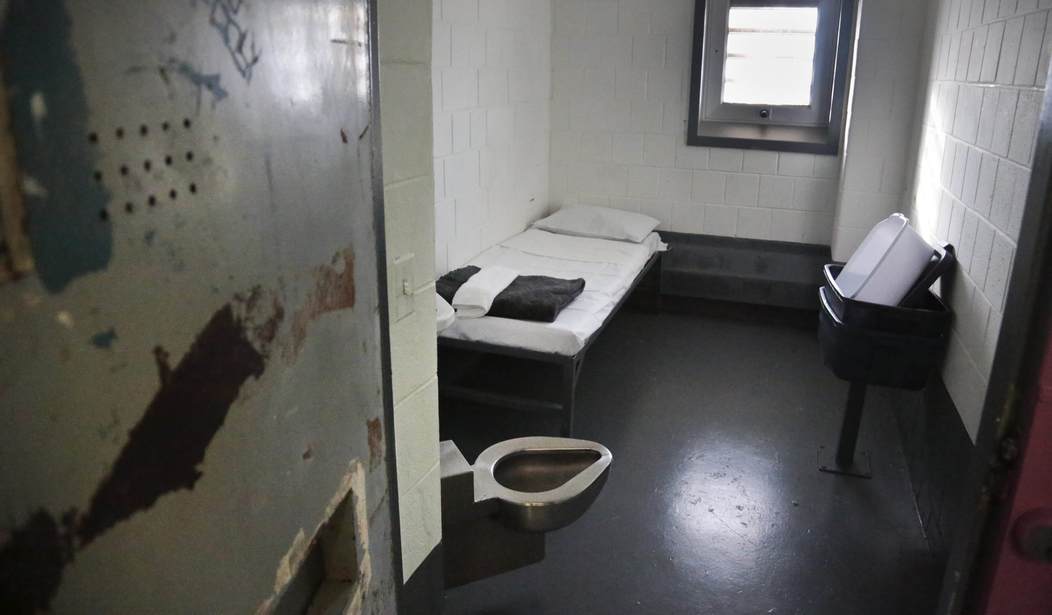WASHINGTON – American medical professionals are weighing an issue that costs taxpayers about $6 billion a year: prison inmates intentionally swallowing foreign objects like forks, steak knives, razor blades, paperclips, and pens.
Medical ethicist Brendan Parent came across the problem in early 2016 while making rounds at NYU Langone Medical Center facilities. He found that certain inmates from Rikers Island had been admitted to NYU facilities five, six or seven times after voluntarily ingesting foreign objects on separate occasions.
Though swallowing objects is a common form of smuggling contraband into prisons, Parent said that was not an issue with the cases he came across. He instead questioned the conditions at Rikers, a New York City facility with a history of inhumane treatment and living conditions. He suggested in a recent interview that inmates are ingesting objects to momentarily escape, even if the hospital visit is only a two- to four-day stay.
“In my mind, this points more to the conditions, the psychological burden, the physical burden that the prison system places on individuals, which would bring them to a place where they would do this, even if they don’t know the exact medical risk,” Parent, who also has studied incarceration and solitary confinement issues, said. “Everyone knows that eating a fork is not good for you. You do this – that means they get out of this horrific environment and into a clean, well-kept place where professionals will be respectful of you. They might get a nice, warm meal or two or three, and who knows what you or I would do in that situation, if we were in that same situation?”
Voluntary ingestion of foreign objects has also been linked to mental illness and self-harm, which is what Rikers officials cited in response to recent questions from PJM.
“We work closely with the city’s correctional health services provider to ensure that people in our custody with mental health issues are provided quality healthcare,” NYC Department of Correction spokesman Peter Thorne wrote in an email last week.
An Ohio State University study released in 2015 revealed that at least 44 states have documented incidents of voluntary ingestion. OSU reported that 1 in 1,900 of the Ohio inmate population intentionally swallows objects, and often repeatedly. The school also estimates that voluntary ingestion of foreign objects accounts for 1,500 deaths annually in the U.S.
The average gastrointestinal emergency costs between $4,600 and $7,700, according to the university, while the average hospital admission for such an issue can exceed $14,000. Researchers estimated the “lifetime charge” for a repeat hospital visitor to be around $50,000. Factor in the more than 2 million inmates across the U.S., and it’s easily a multi-billion-dollar problem given costs associated with hospital and correctional facility staff. OSU pointed to estimates that the overall “cumulative annual cost” of foreign object ingestion in the 44 reporting states is more than $6 billion.
Parent said this constant flow of inmates and other individuals seeking gastrointestinal treatment weighs heavy on hospitals.
“The providers feel a bit powerless because their job is to provide optimal treatment, and these individuals keep coming back, and they’re costing the system a fair bit, and of course providers want to treat them and get them healthy again, but they have difficulty doing this time and time again when there are other people who also need to be treated for gastrointestinal surgical issues,” he said.
He added that nurses, surgeons and physicians try to educate inmates, explaining that not every hospital visit will be a success.
“This kind of injury can lead to significant long-term consequences and even death, and so of course the providers know that this is horrible,” he said. “(Inmates) wouldn’t be doing this if it wasn’t better than the alternative, but letting them know that the next incident may result in their dying is important.”
Parent said he witnessed the issue in NYU gastrointestinal surgical intensive care units, but he declined to disclose the exact facilities. The NYU system includes five hospitals: NYU Langone Hospital in Brooklyn, Tisch Hospital, Rusk Rehabilitation, NYU Langone Orthopedic Hospital and Hassenfeld Children’s Hospital at NYU Langone.
While Parent only witnessed incidents with inmates from Rikers, he guessed that there have probably been occurrences throughout the entire New York system. He also expressed confidence that the issue is still re-occurring at NYU today, about 18 months after he initially discovered the problem.
“I wouldn’t be surprised if this happened within the last few weeks or months,” Parent said. “I don’t think the patterns have changed much, but again I’m not entirely certain.”
Hospital staff are expected to meet and discuss the issue in September.









Join the conversation as a VIP Member